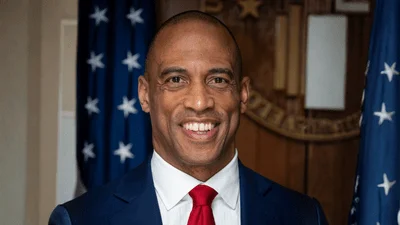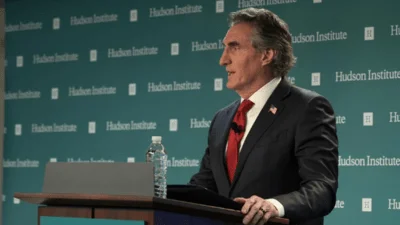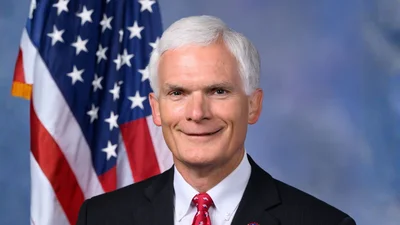The Congressional Record is a unique source of public documentation. It started in 1873, documenting nearly all the major and minor policies being discussed and debated.
“U.S. GEOLOGICAL SURVEY ESTIMATES OF THE 1002 AREA” mentioning the U.S. Dept. of Energy was published in the Senate section on pages S9608-S9609 on July 31, 1998.
The publication is reproduced in full below:
U.S. GEOLOGICAL SURVEY ESTIMATES OF THE 1002 AREA
Mr. MURKOWSKI. Mr. President, the Nation's gold repository at Fort Knox, Kentucky is an acknowledged asset--cuddled, counted and cared for.
But the Nation has a potential ``black gold'' repository under the Arctic Oil Reserve (AOR) that is largely ignored by the Administration--denied, discounted and disputed.
Should someone try to tunnel under Fort Knox to borrow a few tons of gold from the vaults, retribution would be swift--remember
``Goldfinger''?
Yet safe, environmentally sound development at the edge of ANWR at the Sourdough site could potentially siphon off barrels of oil belonging to the U.S. Government. Where is James Bond when we need him?
Certainly not in the person of Secretary of the Interior Bruce Babbitt, the purported watchdog of the Nation's natural resources.
To the contrary, Secretary Babbitt put his head in the tundra back in 1995 and pronounced the Arctic Oil Reserve's oil possibilities to be very low at about 898 million barrels.
In May 1998, the Secretary's own scientists at the U.S. Geological Survey begged to differ. Their estimate based on three years of work by more than 40 geologists and other professionals is that a mean of 7.7 billion barrels of producible oil may reside in the 1002 Area of the AOR.
In the interest of looking at this amazing leap in the estimate of ANWR's producible oil, I chaired a hearing of the Senate Energy and Natural Resources Committee last week, and invited the U.S. Geological Survey to participate.
Three things rang clear at that hearing.
First, while these estimates were the highest ever and proved the 1002 area of the AOR has the greatest potential of securing our Nation's energy needs--they were extremely conservative.
For instance, these estimates were based on a minimum economic field size of 512 million barrels. When in practice the minimum economic field size in Alaska is much lower than that.
Northstar: 145 mm/bb (With a sub-sea pipeline) is deemed economic; Badami: 120 mm/bb is deemed economic; Liberty: 120 mm/bb is deemed economic Sourdough: 100+ mm/bb (adjacent to AOR) is deemed economic.
The Second fact that rang clear is while these new estimates show a clearer picture of the Western portion of the AOR, much remains unclear about the oil and gas potential of the massive structures present in the Eastern portion.
While the USGS has slightly downgraded the potential of that specific area, they do not have the data that industry has from actually drilling a well.
And I can assure you that those with knowledge of what that well contained--the select few--remain very optimistic about the potential oil and gas reserves of the Eastern portion.
Third, technology has increased so dramatically that we can now extract greater amounts of oil from wells with far less impact on the environment at a cost 30% less than 10 years ago.
Consider this, Mr. President. In June of 1994, Amerada Hess concluded the Northstar field in Alaska was uneconomic because development would exceed $1.2 billion and eventually sold the field to BP.
Today, BP expects to begin production of that field's 145 million barrels of reserves in 2000. Estimated development costs: $350 million--a 70% reduction from just 4 years ago.
Mr. President, all these factors point toward the logical conclusion that underlying the 1.5 million-acre oil reserve in Alaska lies greater reserves than recently estimated, and we need to confirm them with better science.
Dr. Thomas J. Casadevall, acting director of the USGS, was very clear in his explanation that if the newer three dimensional (3D) seismic data were available from the Arctic Oil Reserve, their high May estimates of producible oil could soar even higher.
Casadevall explained that their new estimates, while supported by sound science and peer review, were still based on 2D seismic tests done more than a decade ago.
Kenneth A. Boyd, director, division of Oil and Gas of the Alaska Department of Natural Resources, likened the advance of the new testing to the difference between an x-ray and a CAT-scan.
He said the available information from 2D seismic as opposed to 3D seismic is that the former produces a line of data while the latter produces a cube of data. The cube can be turned and examined from all sides and the geologic information proves invaluable for exploration.
This data has revolutionized exploration and development of the North Slope of Alaska. Modern 3-D data provides enhanced and incredibly accurate imaging of potential subsurface reservoirs.
This in turn reduces exploration and development risk, reduces the number of drilled wells, and in turn reduces both overall costs and environmental impacts.
Of course the Administration is under little pressure to allow testing or exploration of the Coastal Plain with gas prices at a 30-
year low. However, the Department of Energy's Information Administration predicts, in ten years, America will be at least 64 percent dependent on foreign oil. It would take that same ten-year period to develop any oil production in AOR.
Therefore, it seems prudent to plan ahead to protect our future energy security.
I intend to introduce legislation that would allow 3D seismic testing on the Coastal Plain. This testing leaves no footprint. In fact, just last year the U.S. Fish and Wildlife Service allowed such testing to be done in the Kenai National Wildlife Refuge, declaring such testing would have ``no significant impact.''
It would have even less impact on the frozen tundra in ANWR. It is also a possibility that the oil industry would be willing to share in the cost of such testing. Let's at least find out what kind of resource we are talking about.
It the Nation were to be crunched in an energy crisis--like the Gulf War--that would require the speedup of development; that development could impact the environment negatively because it would not have the benefit of thoughtful planning.
I believe it is as criminal as stealing gold to refuse to acknowledge the potential for producible oil in the Coastal Plain of the AOR. If we don't know what the resource is, how can we protect it or make an informed decision about its use?
And how can those in this Administration or the environmental community argue it is a bad idea to seek a greater understanding of our public lands?
If we are just guessing that the Sourdough drillers may have tapped an underground AOR vein then we deserve to lose the resource. It is time to get rid of the guesswork and 3D testing will help to do that.
____________________








